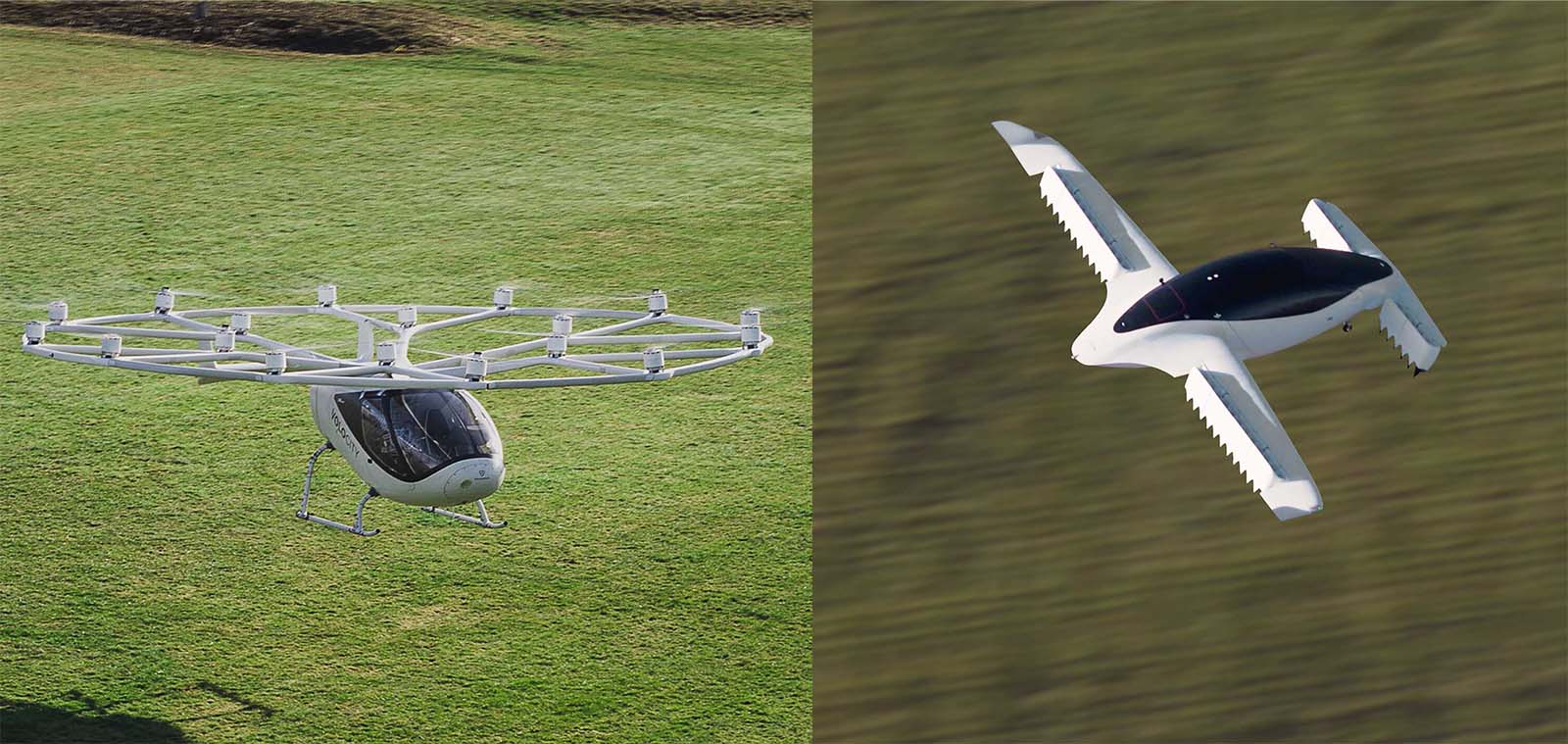Stay Up to Date
Submit your email address to receive the latest industry and Aerospace America news.
European Union Aviation Safety Agency expects more concurrent validations as the advanced air mobility industry grows
The air taxis in development by Lilium and Volocopter couldn’t look more different, but both companies are pursuing similar strategies for gaining regulatory approval for passenger flights: Dual certification in Europe and the U.S.
The German companies are in the process of obtaining type certification for their aircraft from the European Union Aviation Safety Agency and FAA in the next few years. Under this dual certification process, known as concurrent validation, FAA has agreed to approve Lilium and Volocopter to fly their aircraft in the U.S. if they earn type certification from EASA, the lead certifying agency for this concurrent validation.
To that end, both companies are in the midst of flight testing their electric vertical takeoff and landing, eVTOL, designs.
After confirming a certification plan, agency officials visit each company’s test facility to personally witness tests on the ground, simulations and flight tests, and audit the organization regarding the established processes for design, configuration control and incident management.
FAA’s certification will not be a “carbon copy” of the European approvals, Oliver Reinhardt, Volocopter’s chief risk and certification officer, told me in a video call.
“The FAA experts and EASA experts meet or talk on a daily or weekly basis synchronizing, so we are answering only to EASA for now, but FAA has told EASA what it may be seeking also,” Reinhardt said. “That way, when EASA process is complete, FAA should be satisfied also.”
As more advanced air mobility companies refine their air taxi designs, EASA expects an increase in such validations, a spokesperson told me in an email. “We are already training more people on the new requirements for eVTOL and UAS [unoccupied aerial systems], along with the number of related projects.”
Volocopter believes EASA will grant its two-seat VoloCity design type certification in late 2023 or early 2024, which would allow the company to conduct limited air taxi flights during the 2024 Summer Olympics in Paris.
“My expectation with FAA is that we need to expect something in the bandwidth of up to a six months’ delay after closing out the EASA [certification], until FAA experts have received all their information, data, and then can close out the validation,” Reinhardt said.
However, FAA has given no specific deadline for certification once Volocopter has its European approvals, he said. That is a contrast to a similar concurrent certification Volocopter is working with the Civil Aviation Authority of Singapore, which has agreed to nearly simultaneous approval upon review of the company’s EASA certification.
This uncertainty means Volocopter does not “have an exact date for launching in the U.S.,” he said, though the company is in touch with several U.S. cities about conducting passenger flights with the VoloCity.
“We had waited partly because it was completely unclear which direction FAA was going to take on how to certify eVTOL aircraft,” he said, referring to the agency’s recent decision to overhaul certification of aircraft that transition from vertical takeoff to winged flight. “But we clearly see potential in there, and want to go there.”
In addition to the VoloCity, designed for relatively short urban transportation, the company has two additional aircraft in development: the VoloDrone for cargo delivery and the VoloConnect for regional passenger service.
In contrast, Lilium designed its six-seat Lilium Jet for regional flights up to 250 kilometers. Flight testing with the Phoenix 2 demonstrator aircraft is ongoing in Spain, and the company hopes to earn type certification from EASA in 2025 and concurrent type certification from FAA soon after.
FAA caused some confusion over the concurrent validation process when it announced recently that it would classify eVTOL aircraft as powered lift aircraft under a new certification pathway, Erin Rivera, senior associate of regulatory affairs at Lilium, told me in a phone interview. The agency had previously said it would certify eVTOLs under Part 23, regulations for small aircraft.
However, Rivera said the aircraft type certification Lilium and others are pursuing in Europe should match up better with FAA’s new powered lift category than Part 23.
FAA previously told me in a statement that development work done by current AAM applicants “remains valid and the changes in our regulatory approach should not delay their projects.”
Get the latest news about advanced air mobility delivered to your inbox every two weeks.
About paul brinkmann
Paul covers advanced air mobility, space launches and more for our website and the quarterly magazine. Paul joined us in 2022 and is based near Kennedy Space Center in Florida. He previously covered aerospace for United Press International and the Orlando Sentinel.
Related Posts
Stay Up to Date
Submit your email address to receive the latest industry and Aerospace America news.




